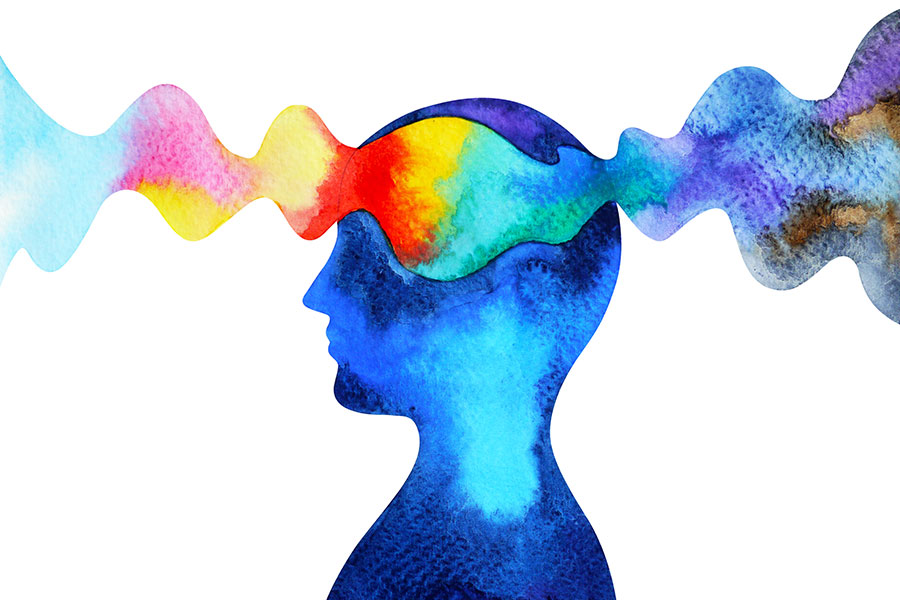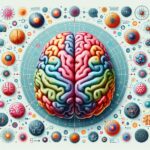Key Takeaways
- Consciousness is a complex phenomenon that involves awareness and the ability to experience thoughts and emotions.
- Integrated Information Theory (IIT) suggests that consciousness arises from the integration of information within a system.
- Global Workspace Theory (GWT) proposes that consciousness is like a spotlight, highlighting specific information for processing.
- Higher-Order Theory (HOT) argues that consciousness involves thoughts about thoughts, or meta-awareness.
- Understanding these theories can help us explore consciousness in medicine, AI, and everyday life.
The Fascinating World of Consciousness
Consciousness is one of the most intriguing and complex phenomena we encounter. It’s not just about being awake; it’s about being aware of the world around us and our own existence within it. From the moment we wake up in the morning to when we drift into sleep at night, consciousness shapes our experiences and perceptions.
Imagine consciousness as a movie playing in your mind. It’s the continuous stream of thoughts, emotions, and sensory experiences that define your reality. But how does this movie come to life? What makes us aware of our surroundings and ourselves? These questions have fascinated scientists and philosophers for centuries, leading to the development of various theories to explain consciousness.

“What is consciousness? – MIT McGovern …” from mcgovern.mit.edu and used with no modifications.
What is Consciousness?
Consciousness is essentially the state of being aware of and able to think about one’s own existence, sensations, thoughts, and environment. It’s what allows us to experience the richness of life, from the taste of your favorite food to the joy of a loved one’s smile. But consciousness is more than just a passive experience; it’s an active process involving the brain’s ability to integrate and process information.
The Brain’s Role in Conscious Experience
The brain plays a crucial role in generating consciousness. It acts as a central processing unit, taking in information from the senses and integrating it to create a cohesive picture of the world. Different areas of the brain are responsible for different aspects of consciousness, such as perception, memory, and decision-making.
For example, the cerebral cortex is heavily involved in processing sensory information and is thought to be a key player in conscious experience. Meanwhile, the thalamus acts as a relay station, directing sensory signals to the appropriate areas of the brain for further processing.
Why Consciousness Matters
Understanding consciousness is important for several reasons. Firstly, it helps us comprehend the human experience, shedding light on how we perceive the world and make decisions. Secondly, it has practical applications in fields like medicine and psychology, where insights into consciousness can improve treatments for disorders like depression and schizophrenia.
Moreover, as we advance in technology, understanding consciousness becomes crucial in developing artificial intelligence (AI) and exploring the potential for conscious machines. Therefore, delving into the theories of consciousness not only satisfies our curiosity but also has far-reaching implications for various aspects of life.

“Contact with universal consciousness …” from www.essentiafoundation.org and used with no modifications.
Major Theories Explaining Consciousness
There are several prominent theories that attempt to explain the enigma of consciousness. Each theory offers a unique perspective, providing valuable insights into how consciousness might arise and function. Let’s explore some of the most influential theories.
Integrated Information Theory (IIT)
Integrated Information Theory (IIT) posits that consciousness arises from the integration of information within a system. According to this theory, the more integrated and differentiated the information, the higher the level of consciousness. IIT suggests that consciousness is not just a byproduct of brain activity but a fundamental property of any system that processes information.
In practical terms, IIT proposes that the brain generates consciousness by integrating sensory inputs and internal states to create a unified experience. This theory provides a mathematical framework for measuring consciousness, known as the phi value, which quantifies the level of information integration within a system.
Global Workspace Theory (GWT)
Global Workspace Theory (GWT) likens consciousness to a spotlight that highlights specific information for processing. According to GWT, the brain contains a global workspace, a mental stage where information is broadcast to various cognitive processes, allowing them to work together in a coordinated manner.
Imagine your brain as a theater, with different cognitive processes as actors on stage. The spotlight of consciousness illuminates the actors, allowing them to perform and interact. GWT suggests that consciousness emerges when information is made globally available, enabling us to focus on specific tasks and make decisions.
Comparing and Contrasting Consciousness Theories
When we delve into the theories of consciousness, it’s essential to compare and contrast them to appreciate their unique contributions and limitations. Each theory offers a distinct lens through which we can examine consciousness, and by understanding these differences, we can gain a more comprehensive view of what it means to be conscious.
Common Goals and Differences
All theories of consciousness aim to explain how subjective experiences arise from physical processes. However, they differ in their approaches and assumptions. Integrated Information Theory (IIT) focuses on the integration of information, while Global Workspace Theory (GWT) emphasizes the broadcasting of information across cognitive processes. Higher-Order Theory (HOT), on the other hand, suggests that consciousness involves a meta-awareness of one’s thoughts.
Despite their differences, these theories share a common goal: to unravel the mystery of consciousness and provide a framework for understanding how it emerges from the brain’s complex workings. By exploring these diverse perspectives, researchers can identify overlapping concepts and areas for further investigation.

“Consciousness | Noba” from nobaproject.com and used with no modifications.
Strengths and Limitations
Each theory has its strengths and limitations. IIT offers a quantitative measure of consciousness, providing a way to assess the level of awareness in different systems. However, its abstract nature can make it challenging to apply in practical scenarios. GWT is praised for its simplicity and ability to explain attention and decision-making processes, but critics argue that it may not fully capture the richness of conscious experience.
HOT provides insights into the reflective nature of consciousness, highlighting the importance of self-awareness. Nevertheless, some researchers question whether higher-order thoughts are necessary for consciousness, as certain experiences seem to occur without explicit self-reflection.
Empirical Support and Criticisms
Empirical evidence plays a crucial role in evaluating consciousness theories. IIT has been supported by studies showing that integrated information correlates with levels of consciousness, such as during sleep or anesthesia. However, its reliance on complex mathematical models has drawn criticism for being difficult to test experimentally.
GWT is backed by research demonstrating the brain’s global broadcasting of information during conscious tasks. Despite this support, some argue that it may oversimplify the diverse processes involved in consciousness. HOT’s emphasis on self-awareness is validated by studies on metacognition, but its critics contend that it may not account for all conscious experiences.
Ultimately, the interplay between empirical evidence and theoretical development is vital for advancing our understanding of consciousness. By scrutinizing the strengths and weaknesses of each theory, researchers can refine their models and explore new avenues of inquiry.
Real-World Insights and Applications
The study of consciousness is not just an academic pursuit; it has real-world implications and applications that impact various fields. From medicine to artificial intelligence, understanding consciousness can lead to breakthroughs that enhance our lives and reshape our future.
Consciousness in Medicine and Psychology
In medicine, insights into consciousness can improve treatments for conditions like coma, brain injuries, and mental health disorders. By understanding how consciousness is disrupted in these conditions, doctors can develop targeted therapies to restore awareness and cognitive function.
For example, researchers have used IIT to assess consciousness levels in patients with severe brain injuries, helping to determine the best course of treatment and predict recovery outcomes.
In psychology, exploring consciousness can enhance our understanding of cognitive processes and emotional experiences. By studying how consciousness influences behavior and decision-making, psychologists can develop interventions to promote mental well-being and resilience.
AI and Conscious Machines
As technology advances, the possibility of conscious machines becomes a topic of interest and debate. By applying theories of consciousness to artificial intelligence, researchers aim to create systems that can process information and interact with the world in ways that mimic human awareness.
However, the question of whether machines can truly be conscious remains a philosophical and ethical challenge. Understanding the nuances of consciousness is crucial for navigating the implications of AI and ensuring that technology serves humanity responsibly.
Consciousness in Everyday Life
Consciousness is not just a scientific concept; it’s a part of our daily lives. It influences how we perceive the world, make decisions, and interact with others. By gaining a deeper understanding of consciousness, we can enhance our self-awareness and improve our relationships.
For instance, mindfulness practices that promote conscious awareness can help individuals manage stress, improve focus, and cultivate a sense of well-being. Embracing the principles of consciousness can lead to a more fulfilling and meaningful life.
The Future of Consciousness Studies
As we continue to explore the mysteries of consciousness, new research directions and interdisciplinary approaches are emerging. The future of consciousness studies holds the promise of groundbreaking discoveries that could transform our understanding of the mind and its capabilities.
Emerging research is focusing on the neural correlates of consciousness, exploring how specific brain networks and processes contribute to awareness. Advances in neuroimaging and computational modeling are providing new tools to investigate these complex phenomena.
Interdisciplinary collaborations between neuroscience, psychology, philosophy, and computer science are paving the way for a holistic understanding of consciousness. By integrating diverse perspectives, researchers can develop comprehensive models that capture the richness and complexity of conscious experience.
Ethical and philosophical considerations are also at the forefront of consciousness studies. As we delve deeper into the nature of awareness, questions about free will, identity, and the moral implications of conscious machines will continue to shape the discourse.
In conclusion, the study of consciousness is a dynamic and evolving field that holds the potential to unlock the secrets of the mind and transform our understanding of what it means to be conscious. By embracing the diverse theories and insights available, we can embark on a journey of discovery that enriches our lives and expands our horizons.

“Health Consciousness: Why is it …” from www.linkedin.com and used with no modifications.
Emerging Research Directions
The future of consciousness studies is bright, with researchers exploring new directions to unravel the complexities of awareness. One promising area is the investigation of neural correlates of consciousness. By identifying specific brain networks and processes associated with conscious experience, scientists hope to gain deeper insights into how consciousness arises and functions.
Advancements in neuroimaging techniques, such as functional MRI and EEG, are providing unprecedented opportunities to observe the brain in action. These tools allow researchers to map the brain’s activity in real-time, offering a window into the dynamic processes that underpin consciousness. Additionally, computational modeling is playing a crucial role in simulating and understanding these complex neural interactions.
Interdisciplinary Approaches
Consciousness is a multifaceted phenomenon that requires an interdisciplinary approach to fully understand. By combining insights from neuroscience, psychology, philosophy, and computer science, researchers are developing comprehensive models that capture the richness of conscious experience.
For example, collaborations between neuroscientists and philosophers are exploring the ethical implications of consciousness, addressing questions about free will and the nature of self. Meanwhile, computer scientists are applying principles of consciousness to artificial intelligence, aiming to create systems that mimic human-like awareness and decision-making processes.
Ethical and Philosophical Considerations
As we delve deeper into the nature of consciousness, ethical and philosophical questions come to the forefront. The possibility of conscious machines raises important considerations about the moral status of artificial entities and the responsibilities of creators. These discussions are crucial for ensuring that technological advancements align with ethical principles and serve humanity’s best interests. For a deeper understanding of the brain’s role in consciousness, explore the key brain regions explained.
Moreover, understanding consciousness has implications for our sense of identity and agency. Questions about free will, personal responsibility, and the nature of self are intertwined with our understanding of consciousness. By addressing these philosophical considerations, we can gain a deeper appreciation of what it means to be conscious and the implications for our lives.
Frequently Asked Questions
Consciousness is a complex topic that often raises intriguing questions. Here, we address some of the most common inquiries to provide clarity and insight into this fascinating subject.
By exploring these questions, we hope to deepen your understanding of consciousness and its implications for various aspects of life.
Understanding consciousness is not just an academic pursuit; it has real-world implications that can transform our lives and reshape our future.
As we continue to explore the mysteries of consciousness, we are reminded of the profound impact it has on our experiences and interactions with the world. For those interested in the psychology behind social behaviors, understanding extroversion can offer valuable insights.
How do scientists measure consciousness?
Scientists measure consciousness using a variety of methods, including neuroimaging techniques like fMRI and EEG. These tools allow researchers to observe brain activity and identify patterns associated with different states of awareness. Behavioral assessments, such as response to stimuli and self-report questionnaires, also provide valuable insights into conscious experience.
Moreover, mathematical models like the phi value in Integrated Information Theory (IIT) offer a quantitative measure of consciousness, helping researchers assess the level of awareness in different systems. By combining these approaches, scientists can develop a comprehensive understanding of consciousness and its underlying mechanisms.
Can animals be conscious too?
Yes, many scientists believe that animals possess some form of consciousness. While the nature and extent of animal consciousness may differ from humans, research suggests that animals experience awareness and can engage in complex behaviors that indicate conscious processing.
Is consciousness unique to humans?
- Consciousness is not unique to humans; many animals exhibit behaviors suggesting awareness and decision-making abilities.
- Research on animal cognition and consciousness continues to expand our understanding of non-human awareness.
- Exploring consciousness across species can provide valuable insights into the evolution and nature of awareness.
By studying consciousness in animals, we can gain a broader perspective on the diversity of conscious experiences in the natural world.
How does consciousness impact decision making?
Consciousness plays a crucial role in decision making by allowing us to evaluate options, anticipate outcomes, and reflect on our choices. It enables us to weigh the pros and cons of different actions and consider the potential consequences. By bringing relevant information to the forefront of our awareness, consciousness helps guide our decisions and actions. For more insights, explore consciousness in psychology.
What are the ethical implications of consciousness research?
Consciousness research raises important ethical questions, particularly in the context of artificial intelligence and neuroscience. As we develop technologies that mimic or enhance consciousness, we must consider the moral status of these systems and the responsibilities of creators. Additionally, understanding consciousness has implications for personal identity, agency, and free will, prompting philosophical discussions about the nature of self and the ethical treatment of conscious beings.
In conclusion, consciousness is a rich and multifaceted phenomenon that continues to captivate researchers and philosophers alike. By exploring the diverse theories and insights available, we can deepen our understanding of consciousness and its implications for our lives and the world around us.










Leave a Reply